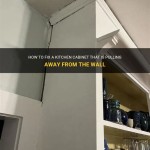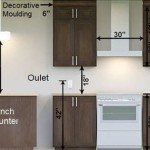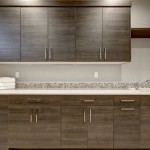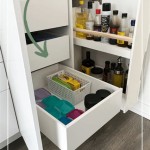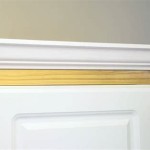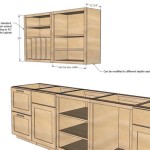How to Remove Dirt and Grease From Kitchen Cabinets
Kitchen cabinets are prone to accumulating dirt, grease, and grime, especially those near the stovetop. Regular cleaning is essential to maintain their appearance and hygiene. This article provides a comprehensive guide on effectively removing dirt and grease from kitchen cabinets, covering various cleaning methods for different cabinet materials.
Identifying Cabinet Material
Before starting the cleaning process, it's crucial to identify the cabinet material. Different materials require specific cleaning approaches to prevent damage. Common kitchen cabinet materials include wood, laminate, metal, and painted surfaces. Knowing the material will help determine the appropriate cleaning solutions and tools.
Gathering Cleaning Supplies
Having the necessary cleaning supplies readily available will streamline the process. Essential supplies include:
- Soft microfiber cloths or sponges
- Dish soap
- Baking soda
- White vinegar
- Warm water
- Spray bottle
- Bucket
- Gloves (optional)
- Commercial degreaser (optional)
Cleaning Wood Cabinets
Wood cabinets require gentle cleaning to avoid damaging the finish. The following steps outline a safe and effective cleaning method:
- Mix a solution of warm water and a few drops of mild dish soap.
- Dampen a soft microfiber cloth with the solution, ensuring it's not dripping wet.
- Wipe down the cabinet surfaces, following the wood grain.
- Rinse the cloth with clean water and wipe the cabinets again to remove any soap residue.
- Dry the cabinets thoroughly with a clean, dry cloth.
- For stubborn grease spots, mix a paste of baking soda and water. Apply the paste to the affected area and let it sit for a few minutes before gently rubbing and wiping clean.
Cleaning Laminate Cabinets
Laminate cabinets are generally more durable and resistant to stains than wood cabinets. However, harsh chemicals can damage the laminate surface. The following steps outline the cleaning process:
- Mix a solution of warm water and a few drops of mild dish soap.
- Dampen a soft microfiber cloth or sponge with the solution.
- Wipe down the cabinet surfaces.
- Rinse the cloth with clean water and wipe the cabinets again to remove soap residue.
- Dry the cabinets thoroughly.
- Avoid using abrasive cleaners or scouring pads, as they can scratch the laminate.
Cleaning Metal Cabinets
Metal cabinets, particularly stainless steel, are common in modern kitchens. Cleaning them requires specific attention to prevent streaks and water spots. The recommended cleaning procedure is:
- Mix a solution of warm water and a few drops of mild dish soap.
- Wipe down the cabinet surfaces with the solution using a soft cloth or sponge.
- Rinse the cabinets with clean water.
- Dry the cabinets thoroughly with a clean, dry cloth to prevent water spots.
- For stubborn stains or fingerprints, use a specialized stainless steel cleaner following the manufacturer's instructions.
- Wipe the cabinets in the direction of the grain for a streak-free finish.
Cleaning Painted Cabinets
Painted cabinets require careful cleaning to avoid damaging the paint. Follow these steps for effective cleaning:
- Mix a solution of warm water and a few drops of mild dish soap.
- Dampen a soft microfiber cloth or sponge with the solution.
- Gently wipe down the cabinet surfaces, avoiding excessive scrubbing.
- Rinse the cloth with clean water and wipe the cabinets again to remove soap residue.
- Dry the cabinets thoroughly.
- Avoid using harsh chemicals or abrasive cleaners, which can strip the paint.
- For stubborn grease stains, try a mixture of baking soda and water, applied as a paste and gently rubbed.
Dealing with Stubborn Grease
For particularly stubborn grease buildup, a stronger cleaning solution may be necessary. Consider these options:
- Mix equal parts white vinegar and water in a spray bottle. Spray the solution onto the greasy areas, let it sit for a few minutes, then wipe clean.
- Use a commercial degreaser following the manufacturer's instructions. Test the degreaser on a small, inconspicuous area first to ensure it doesn't damage the cabinet finish.
Maintaining Clean Cabinets
Regular maintenance can prevent excessive grease and dirt buildup, simplifying future cleaning. Implement these practices:
- Wipe down cabinets regularly with a damp cloth after cooking to remove any splatters or spills.
- Use a range hood while cooking to minimize airborne grease particles.
- Clean cabinets thoroughly at least once a month to maintain their appearance and hygiene.

How To Clean Kitchen Cabinets Everyday Skate

How To Clean Grimy Kitchen Cabinets With 2 Ingredients

Clean Kitchen Cabinets Off With These Tips And Hints

How To Remove Grease From Kitchen Cabinets 3 Methods Bob Vila

How To Clean Sticky Grease Off Kitchen Cabinets Ovenclean

How To Clean Kitchen Cabinets And Remove Grease
:max_bytes(150000):strip_icc()/ways-to-clean-wood-kitchen-cabinets-3017289-01-765f893e7cca49a1ab72d7c49efdf518.jpg?strip=all)
Tips For Cleaning Food Grease From Wood Cabinets

How To Clean White Kitchen Cabinets 3 Best Ways Avoid Abbotts At Home

How To Clean Dirt And Grease On Kitchen Cabinets Life S

Degrease Kitchen Cabinets With An All Natural Homemade Cleaner
Related Posts


